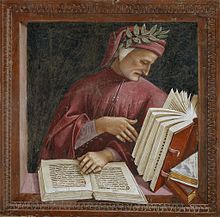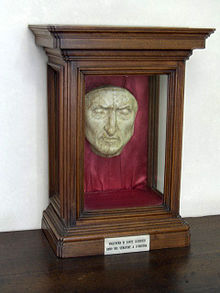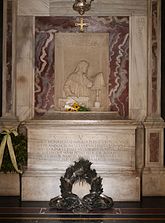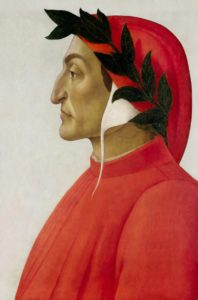 On this day in 1321, poet Dante Alighieri died in Ravenna at the age of c. 56. Born Durante degli Alighieri c. 1265 in Florence, Italy. A major poet of the Late Middle Ages, his Divine Comedy, originally called Comedìa (modern Italian: Commedia) and later christened Divina by Giovanni Boccaccio, in my opinion, is the most important poem of the Middle Ages and the greatest literary work in the Italian language.
On this day in 1321, poet Dante Alighieri died in Ravenna at the age of c. 56. Born Durante degli Alighieri c. 1265 in Florence, Italy. A major poet of the Late Middle Ages, his Divine Comedy, originally called Comedìa (modern Italian: Commedia) and later christened Divina by Giovanni Boccaccio, in my opinion, is the most important poem of the Middle Ages and the greatest literary work in the Italian language.
In the late Middle Ages, most poetry was written in Latin, accessible only to the most educated readers. In De vulgari eloquentia (On Eloquence in the Vernacular), however, Dante defended use of the vernacular in literature. He would even write in the Tuscan dialect for works such as The New Life (1295) and the Divine Comedy; this highly unorthodox choice set a precedent that important later Italian writers such as Petrarch and Boccaccio would follow.
Dante was instrumental in establishing the literature of Italy, and his depictions of Hell, Purgatory and Heaven provided inspiration for the larger body of Western art. In addition, the first use of the interlocking three-line rhyme scheme, or the terza rima, is attributed to him. In Italy, he is often referred to as il Sommo Poeta (“the Supreme Poet”) and il Poeta; he, Petrarch, and Boccaccio are also called “the three fountains” or “the three crowns”.
Dante said he first met Beatrice Portinari, daughter of Folco Portinari, at age nine, and claimed to have fallen in love with her “at first sight”, apparently without even talking with her. He saw her frequently after age 18, often exchanging greetings in the street, but never knew her well. In effect, he set an example of so-called courtly love, a phenomenon developed in French and Provençal poetry of prior centuries. Dante’s experience of such love was typical, but his expression of it was unique. It was in the name of this love that Dante left his imprint on the dolce stil novo (sweet new style, a term which Dante himself coined), and he would join other contemporary poets and writers in exploring never-before-emphasized aspects of love (Amore). Love for Beatrice (as Petrarch would show for Laura somewhat differently) would be his reason for poetry and for living, together with political passions. In many of his poems, she is depicted as semi-divine, watching over him constantly and providing spiritual instruction, sometimes harshly.
The Final Footprint
He was entombed in Ravenna at the Church of San Pier Maggiore (later called San Francesco). Bernardo Bembo, praetor of Venice, erected a tomb for him in 1483.
On the grave, some verses of Bernardo Canaccio, a friend of Dante, dedicated to Florence:
|
parvi Florentia mater amoris |
Florence, mother of little love |
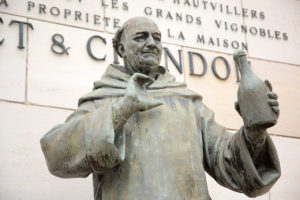 On this day in 1715, French Benedictine monk Dom Pérignon died at the abbey of Hautvillers near the town of Epernay at the approximate age of 77. Born Pierre Pérignon c. 1638 in the town of Saint-Menehould in the Champagne region of northern France. Dom Pierre made important contributions to the production and quality of Champagne wine in an era when the region’s wines were predominantly still and red. Popular myths frequently, but erroneously, credit him with the invention of sparkling Champagne, which didn’t become the dominant style of Champagne until the mid-19th century. The famous champagne Dom Pérignon, the prestige cuvée of Moët & Chandon, is named after him.
On this day in 1715, French Benedictine monk Dom Pérignon died at the abbey of Hautvillers near the town of Epernay at the approximate age of 77. Born Pierre Pérignon c. 1638 in the town of Saint-Menehould in the Champagne region of northern France. Dom Pierre made important contributions to the production and quality of Champagne wine in an era when the region’s wines were predominantly still and red. Popular myths frequently, but erroneously, credit him with the invention of sparkling Champagne, which didn’t become the dominant style of Champagne until the mid-19th century. The famous champagne Dom Pérignon, the prestige cuvée of Moët & Chandon, is named after him.
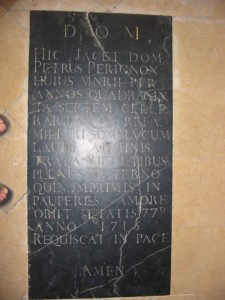 The Final Footprint – Dom Pierre was buried in a section of the abbey cemetery traditionally reserved only for abbots.
The Final Footprint – Dom Pierre was buried in a section of the abbey cemetery traditionally reserved only for abbots.
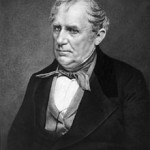 On this day in 1851, writer James Fenimore Cooper died the day before his 62nd birthday from dropsy in Cooperstown, New York. Born in Burlington, New Jersey on 15 September 1789. His historical romances of frontier and Indian life in the early American days created a unique form of American literature. He lived most of his life in Cooperstown, which was established by his father William. He attended Yale University for three years, where he was a member of the Linonian Society, but was expelled for misbehavior. Before embarking on his career as a writer he served in the U.S. Navy as a Midshipman which greatly influenced many of his novels and other writings. He is best remembered as a novelist who wrote numerous sea-stories and the historical novels known as the Leatherstocking Tales. Among his most famous works is the Romantic novel The Last of the Mohicans (1826), often regarded as his masterpiece.
On this day in 1851, writer James Fenimore Cooper died the day before his 62nd birthday from dropsy in Cooperstown, New York. Born in Burlington, New Jersey on 15 September 1789. His historical romances of frontier and Indian life in the early American days created a unique form of American literature. He lived most of his life in Cooperstown, which was established by his father William. He attended Yale University for three years, where he was a member of the Linonian Society, but was expelled for misbehavior. Before embarking on his career as a writer he served in the U.S. Navy as a Midshipman which greatly influenced many of his novels and other writings. He is best remembered as a novelist who wrote numerous sea-stories and the historical novels known as the Leatherstocking Tales. Among his most famous works is the Romantic novel The Last of the Mohicans (1826), often regarded as his masterpiece.
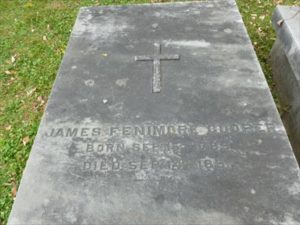 The Final Footprint – Cooper’s interment was in Christ Episcopal Churchyard, where his father, was buried. Cooper’s wife Susan survived her husband only by a few months and was buried by his side at Cooperstown. Several well-known writers, politicians, and other public figures honored Cooper’s memory with a dinner in February 1852; Washington Irving served as a co-chairman for the event, along with William Cullen Bryant and Daniel Webster. The protagonist of Cooper’s Leatherstocking Tales, is Nathaniel “Natty” Bumppo, whose other nickname is Hawkeye. The character of Hawkeye Pierce from M*A*S*H takes his nickname from Bumppo. In both the original book and the TV series it is stated that The Last of the Mohicans is the only book Pierce’s father had ever read. Bumppo is portrayed in the 1992 film version of The Last of the Mohicans by Daniel Day-Lewis. The film also starred Madeleine Stowe and Wes Studi. The soundtrack for the film features music by Trevor Jones and Randy Edelman, and the song “I Will Find You” by Clannad. The main theme of the film is taken from the tune “The Gael” by Scottish singer-songwriter Dougie MacLean. Released on September 25, 1992, in the United States, The Last of the Mohicans was met with nearly-universal praise from critics as well as being commercially successful during its box-office run.
The Final Footprint – Cooper’s interment was in Christ Episcopal Churchyard, where his father, was buried. Cooper’s wife Susan survived her husband only by a few months and was buried by his side at Cooperstown. Several well-known writers, politicians, and other public figures honored Cooper’s memory with a dinner in February 1852; Washington Irving served as a co-chairman for the event, along with William Cullen Bryant and Daniel Webster. The protagonist of Cooper’s Leatherstocking Tales, is Nathaniel “Natty” Bumppo, whose other nickname is Hawkeye. The character of Hawkeye Pierce from M*A*S*H takes his nickname from Bumppo. In both the original book and the TV series it is stated that The Last of the Mohicans is the only book Pierce’s father had ever read. Bumppo is portrayed in the 1992 film version of The Last of the Mohicans by Daniel Day-Lewis. The film also starred Madeleine Stowe and Wes Studi. The soundtrack for the film features music by Trevor Jones and Randy Edelman, and the song “I Will Find You” by Clannad. The main theme of the film is taken from the tune “The Gael” by Scottish singer-songwriter Dougie MacLean. Released on September 25, 1992, in the United States, The Last of the Mohicans was met with nearly-universal praise from critics as well as being commercially successful during its box-office run.
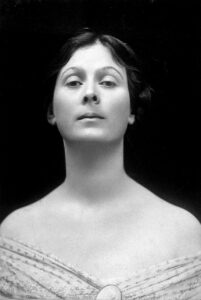 On this day in 1927 dancer Isadora Duncan died when her scarf became entangled in the wheel and axle of the car in which she was travelling in Nice, France, aged 50. Born Angela Isadora Duncan on May 26, 1877 or May 27, 1878, in San Francisco. She performed to great acclaim throughout Europe and the US. Duncan lived and danced in Western Europe, the US and the Soviet Union from the age of 22 until her death.
On this day in 1927 dancer Isadora Duncan died when her scarf became entangled in the wheel and axle of the car in which she was travelling in Nice, France, aged 50. Born Angela Isadora Duncan on May 26, 1877 or May 27, 1878, in San Francisco. She performed to great acclaim throughout Europe and the US. Duncan lived and danced in Western Europe, the US and the Soviet Union from the age of 22 until her death.
Duncan bore three children, all out of wedlock. The first two, Deirdre Beatrice (born September 24, 1906), whose father was theatre designer Gordon Craig; and the second, Patrick Augustus (born May 1, 1910), by Paris Singer, one of the many sons of sewing machine magnate Isaac Singer, drowned in the care of their nanny in 1913 when their car went into the River Seine. Following the accident, Duncan spent several months recuperating in Corfu with her brother and sister, then several weeks at the Viareggio seaside resort with the actress Eleonora Duse.
In her autobiography, Duncan relates that in her deep despair over the deaths of her children, she begged a young Italian stranger, the sculptor Romano Romanelli, to sleep with her because she was desperate for another child. She became pregnant and gave birth to a son on August 13, 1914, but he died shortly after birth.
When Duncan stayed at the Viareggio seaside resort with Duse, Duse had just left a relationship with the rebellious and epicene young feminist Lina Poletti. This fueled speculation as to the nature of Duncan and Duse’s relationship, but there has never been any indication that the two were involved romantically. In fact, Duncan was loving by nature and was close to her mother, siblings and all of her male and female friends. Later on, in 1921, after the end of the Russian Revolution, Duncan moved to Moscow where she met the poet Sergei Yesenin, who was eighteen years her junior. On May 2, 1922, they married, and Yesenin accompanied her on a tour of Europe and the United States. However, the marriage was brief as they grew apart while getting to know each other. In May 1923 Yesenin returned to Moscow. Two years later, on December 28, 1925, he was found dead in his room in the Hotel Angleterre in St Petersburg, in an apparent suicide.
Duncan also had a relationship with the poet and playwright Mercedes de Acosta, as documented in numerous revealing letters they wrote to each other. In one, Duncan wrote, “Mercedes, lead me with your little strong hands and I will follow you – to the top of a mountain. To the end of the world. Wherever you wish.”
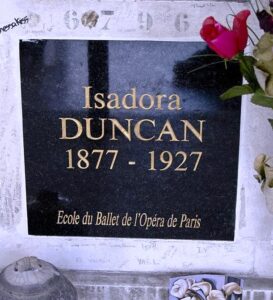 The Final Footprint – Duncan was a passenger in an Amilcar CGSS automobile owned by Benoît Falchetto [fr], a French-Italian mechanic. She wore a long, flowing, hand-painted silk scarf, created by the Russian-born artist Roman Chatov, a gift from her friend Mary Desti. Desti, who saw Duncan off, had asked her to wear a cape in the open-air vehicle because of the cold weather, but she would agree to wear only the scarf. As they departed, she reportedly said to Desti and some companions, “Adieu, mes amis. Je vais à la gloire !” (“Farewell, my friends. I go to glory!”); but according to the American novelist Glenway Wescott, Desti later told him that Duncan’s actual parting words were, “Je vais à l’amour” (“I am off to love”). Desti considered this embarrassing, as it suggested that she and Falchetto were going to her hotel for a tryst.
The Final Footprint – Duncan was a passenger in an Amilcar CGSS automobile owned by Benoît Falchetto [fr], a French-Italian mechanic. She wore a long, flowing, hand-painted silk scarf, created by the Russian-born artist Roman Chatov, a gift from her friend Mary Desti. Desti, who saw Duncan off, had asked her to wear a cape in the open-air vehicle because of the cold weather, but she would agree to wear only the scarf. As they departed, she reportedly said to Desti and some companions, “Adieu, mes amis. Je vais à la gloire !” (“Farewell, my friends. I go to glory!”); but according to the American novelist Glenway Wescott, Desti later told him that Duncan’s actual parting words were, “Je vais à l’amour” (“I am off to love”). Desti considered this embarrassing, as it suggested that she and Falchetto were going to her hotel for a tryst.
Her silk scarf, draped around her neck, became entangled around the open-spoked wheels and rear axle, pulling her from the open car and breaking her neck. Desti said she called out to warn Duncan about the scarf almost immediately after the car left. Desti took Duncan to the hospital, where she was pronounced dead.
As The New York Times noted in its obituary, Duncan “met a tragic death at Nice on the Riviera”. “According to dispatches from Nice, Duncan was hurled in an extraordinary manner from an open automobile in which she was riding and instantly killed by the force of her fall to the stone pavement.” Other sources noted that she was almost decapitated by the sudden tightening of the scarf around her neck. The accident gave rise to Gertrude Stein’s mordant remark that “affectations can be dangerous”. At the time of her death, Duncan was a Soviet citizen. Her will was the first of a Soviet citizen to undergo probate in the U.S.
Duncan was cremated, and her cremated remains were placed next to those of her children in the columbarium at Père Lachaise Cemetery in Paris. On the headstone of her grave is inscribed École du Ballet de l’Opéra de Paris (“Ballet School of the Opera of Paris”).
 On this day in 1982, Academy Award-winning actress and Princess of Monaco, Grace Kelly died from a cerebral hemorrage after a car wreck in France near Monaco at the age of 52. Born Grace Patricia Kelly on 12 November 1929 in Philadelphia, Pennsylvania.
On this day in 1982, Academy Award-winning actress and Princess of Monaco, Grace Kelly died from a cerebral hemorrage after a car wreck in France near Monaco at the age of 52. Born Grace Patricia Kelly on 12 November 1929 in Philadelphia, Pennsylvania.
After embarking on an acting career in 1950, when she was 20, Kelly appeared in New York City theatrical productions and more than 40 episodes of live drama productions broadcast during the early 1950s Golden Age of Television. From 1952 to 1956 she starred in several critically and commercial successful films, usually opposite male romantic leads 25 to 30 years older than her. In October 1953, she gained stardom from her performance in director John Ford’s film Mogambo starring Clark Gable and Ava Gardner, which won her a Golden Globe Award and an Academy Award nomination for Best Supporting Actress. In 1954 she won the Academy Award for Best Actress for her deglamorized performance in The Country Girl with Bing Crosby. Other noteworthy films she starred in include High Noon (1952), with Gary Cooper; High Society (1956), with Bing Crosby and Frank Sinatra; and three Alfred Hitchcock films in rapid succession: Dial M for Murder (1954), with Ray Milland; Rear Window (1954), with James Stewart; and, To Catch a Thief (1955), with Cary Grant.
Kelly retired from acting at the age of 26 to marry Prince Rainier III of Monaco, and began her duties as Princess of Monaco. It is well known that Hitchcock was hoping she would appear in more of his films which required a “icy blonde” lead actress, but he was unable to coax her out of retirement. Kelly and Rainier had three children: Princess Caroline, Prince Albert, and Princess Stéphanie. Kelly retained her link to America by her dual U.S. and Monégasque citizenship. My all-time favorite movie featuring Kelly is Alfred Hitchcock’s Rear Window.
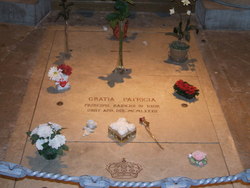 The Final Footprint – Kelly was entombed in the Grimaldi family vault in the Cathedral of Saint Nicholas in Monte Carlo. Diana, Princess of Wales attended her funeral representing the British royal family. Prince Rainier, who did not remarry, was buried alongside her following his death in 2005.
The Final Footprint – Kelly was entombed in the Grimaldi family vault in the Cathedral of Saint Nicholas in Monte Carlo. Diana, Princess of Wales attended her funeral representing the British royal family. Prince Rainier, who did not remarry, was buried alongside her following his death in 2005.
#RIP #OTD in 1996 dancer, actress (Can-Can, G.I. Blues, The Fiercest Heart, Who Killed Teddy Bear?) Juliet Prowse died from pancreatic cancer in Los Angeles aged 59. Cremation
#RIP #OTD 2005 film director (West Side Story, The Sound of Music, The Haunting, The Andromeda Strain, The Hindenburg, Star Trek: The Motion Picture) Robert Wise died at UCLA Medical Center, Los Angeles from heart failure aged 91. Cremation
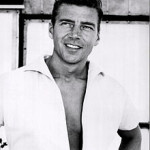 On this day in 2006, bodybuilder, actor, husband of Jayne Mansfield, father of Mariska Hargitay, 1955 Mr. Universe, Mickey Hargitay died in Los Angeles, aged 80, from multiple myeloma. Born Miklós Hargitay on 6 January 1926 in Budapest, Hungary. Hargitay moved to the United States in 1947, where he eventually became a citizen. He was married to actress Jayne Mansfield. During their marriage, Hargitay and Mansfield made four movies together: Will Success Spoil Rock Hunter? (1957), The Loves of Hercules (1960), Promises! Promises! (1963), and L’Amore Primitivo (1964).
On this day in 2006, bodybuilder, actor, husband of Jayne Mansfield, father of Mariska Hargitay, 1955 Mr. Universe, Mickey Hargitay died in Los Angeles, aged 80, from multiple myeloma. Born Miklós Hargitay on 6 January 1926 in Budapest, Hungary. Hargitay moved to the United States in 1947, where he eventually became a citizen. He was married to actress Jayne Mansfield. During their marriage, Hargitay and Mansfield made four movies together: Will Success Spoil Rock Hunter? (1957), The Loves of Hercules (1960), Promises! Promises! (1963), and L’Amore Primitivo (1964).
Hargitay and Mansfield met in 1956, when he was performing in The Mae West Show at the Latin Quarter. The couple married on January 13, 1958. Hargitay remodeled much of his and Mansfield’s Beverly Hills mansion, known as “The Pink Palace”, building its famous heart-shaped swimming pool. In November 2002, the house was razed by developers who had purchased it from Engelbert Humperdinck.
In May 1963, Hargitay and Mansfield filed for divorce in Ciudad Juárez. The divorce was ruled invalid, and the two reconciled in October 1963. After Mariska’s birth, Mansfield sued for the Juárez divorce to be declared legal, and ultimately won. The divorce was recognized in the United States on August 26, 1964. Hargitay married again in September 1967 to Ellen Siano. Siano and Hargitay remained married for 39 years, until his death.
The Final Footprint – Hargitay was cremated. Arnold Schwarzenegger portrayed Hargitay in the 1980 made for television movie, The Jayne Mansfield Story, with Lonnie Anderson starring as Mansfield.
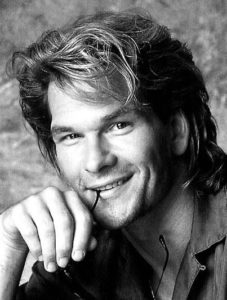 On this day in 2009, actor, dancer, singer and songwriter Patrick Swayze died from pancreatic cancer at the age of 57 with his family at his side in Los Angeles. Born Patrick Wayne Swayze on 18 August 1952 in Houston. Perhaps best known for his tough-guy roles and as romantic leading men in the hit films Dirty Dancing and Ghost, and as Orry Main in the North and South television miniseries. He was named by People magazine as its “Sexiest Man Alive” in 1991. His film and TV career spanned 30 years.
On this day in 2009, actor, dancer, singer and songwriter Patrick Swayze died from pancreatic cancer at the age of 57 with his family at his side in Los Angeles. Born Patrick Wayne Swayze on 18 August 1952 in Houston. Perhaps best known for his tough-guy roles and as romantic leading men in the hit films Dirty Dancing and Ghost, and as Orry Main in the North and South television miniseries. He was named by People magazine as its “Sexiest Man Alive” in 1991. His film and TV career spanned 30 years.
The Final Footprint – Swayze was cremated and his cremains were scattered at his ranch in New Mexico.
 And on this day in 2021, stand-up comedian, actor, writer Norm Macdonald died of leukemia at the City of Hope National Medical Center in Duarte, California, aged 61. Born Norman Gene Macdonald on October 17, 1959 in Quebec City, Canada. His stand-up style was characterized by a slow, almost stuttering deadpan delivery and the use of folksy, old-fashioned turns of phrase. He appeared in many films and was a regular guest on late-night talk shows, where he became best known for telling shaggy dog stories.
And on this day in 2021, stand-up comedian, actor, writer Norm Macdonald died of leukemia at the City of Hope National Medical Center in Duarte, California, aged 61. Born Norman Gene Macdonald on October 17, 1959 in Quebec City, Canada. His stand-up style was characterized by a slow, almost stuttering deadpan delivery and the use of folksy, old-fashioned turns of phrase. He appeared in many films and was a regular guest on late-night talk shows, where he became best known for telling shaggy dog stories.
Early in his career, Macdonald’s first work on television included writing for such comedies as Roseanne and The Dennis Miller Show. In 1993, Macdonald was hired as a writer and cast member on Saturday Night Live (SNL), spending a total of five seasons on the series, which included anchoring the show’s Weekend Update segment for three and a half seasons. He was removed as host of SNL’s ‘Weekend Update‘ in 1998, allegedly for relentlessly mocking O.J. Simpson during his murder trial, offending producer Don Ohlmeyer, of whom Simpson was a close friend. After being fired from SNL, he wrote and starred in the 1998 film Dirty Work and headlined his own sitcom The Norm Show from 1999 to 2001. Macdonald was also a voice actor, and provided voice acting roles for Family Guy, Mike Tyson Mysteries, The Orville, and the Dr. Dolittle films.
Between 2013 and 2018, Macdonald hosted the talk shows Norm Macdonald Live (a video podcast) and Norm Macdonald Has a Show (a Netflix series), on which he interviewed comedians and other celebrities. In 2016, he authored Based on a True Story, a novel that presented a heavily fictionalized account of his life.
The Final Footprint – In 2013, Macdonald was diagnosed with multiple myeloma. He disclosed his diagnosis to only his family, agent, and producing partner, fearing that revealing his condition to the public would “affect the way he was perceived”, according to his brother Neil. The cancer went into remission not long after, but returned in early 2020, metastasizing into myelodysplastic syndrome, a cancer that often develops into acute leukemia. In July 2021, Macdonald entered the City of Hope National Medical Center in Duarte, California for a round of chemotherapy, where he developed an infection. He remained hospitalized at the City of Hope until his death.
Among those who expressed their sorrow over his death via social-media channels were comedians Jim Breuer, Conan O’Brien, Dave Chappelle, Adam Sandler, David Letterman, Jay Leno, David Spade, Sarah Silverman, Artie Lange, Seth Rogen, Bob Saget, Jim Carrey, Bill Burr, Gilbert Gottfried, David Cross and multiple other fellow comedians, as well as musician Frank Stallone (whom Macdonald used repeatedly as a non-sequitur during Weekend Update) and former US Senate Majority Leader Bob Dole (whom Macdonald played during his tenure at SNL). Letterman called him “[The best] in every important way, in the world of stand-up… an opinion shared by me and all peers.” According to O’Brien, “Norm had the most unique comedic voice I have ever encountered and he was so relentlessly and uncompromisingly funny. I will never laugh that hard again.” Both John Oliver and Lorne Michaels dedicated their victories at the 73rd Primetime Emmy Awards to Macdonald’s memory. Season 3 of The Orville opened with an onscreen dedication to Macdonald.
On July 12, 2022, Macdonald was posthumously nominated for three Primetime Emmys for his standup special Norm Macdonald: Nothing Special.
Have you planned yours yet?
Follow us on twitter @RIPTFF
http://thefinalfootprint.com/2022/09/14/day-in-history-14-september/(opens in a new tab) http://thefinalfootprint.com/2022/09/14/day-in-history-14-september/







